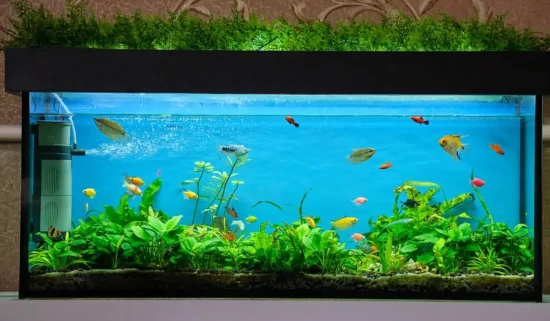 Welcome to the enchanting world of fishkeeping, where vibrant colors, graceful movements, and a sense of tranquility come together in a fascinating underwater display. Whether you’re seeking an interesting hobby, a source of relaxation, or an educational experience for yourself or your family, starting a fish tank is an adventure worth looking into.
Welcome to the enchanting world of fishkeeping, where vibrant colors, graceful movements, and a sense of tranquility come together in a fascinating underwater display. Whether you’re seeking an interesting hobby, a source of relaxation, or an educational experience for yourself or your family, starting a fish tank is an adventure worth looking into.
In this beginner’s guide, we’ll take you on a journey through the ins and outs of setting up and maintaining a fish tank. Don’t worry if you’re completely new to this world; we’ll be your trusted guide, providing the information you need to get started.
Benefits of Having a Fish Tank
Fish tanks, or aquariums, are more than just beautiful additions to your home or office decor. They offer an intriguing window into a world that’s teeming with life and wonder. Picture a serene aquatic habitat with shimmering fish darting through crystal-clear water, gracefully gliding among vibrant plants and colorful decorations. Whether you have a spacious room or a small corner to spare, whether you have a modest budget or the means to invest in a larger setup, there’s a fish tank that suits your needs.
Have you ever been mesmerized by fish gracefully swimming in a tranquil tank? There’s something undeniably appealing about observing these aquatic creatures in their serene underwater world. Fish tanks have an inherent allure that can instantly draw you in and provide a calming effect on your mind and soul.
Education opportunities for children
Fish tanks are not just delightful displays; they also offer valuable educational opportunities, making them an excellent tool for learning, especially for children. When you set up a fish tank, you are creating a miniature ecosystem that can serve as a hands-on educational experience.
Children can learn about the delicate balance of nature, the concept of ecosystems, and the interdependencies between fish, plants, and their environment. They can observe the behavior, feeding habits, and unique characteristics of different fish species. This practical knowledge helps foster curiosity, empathy, and an appreciation for the natural world.
Moreover, caring for a fish tank instills a sense of responsibility in children. They learn about the importance of regular maintenance tasks such as feeding the fish, checking water parameters, and cleaning the tank. By involving them in the care of the tank, you’re nurturing their understanding of commitment and providing an opportunity for growth.
Therapeutic benefits
The serene nature of fish tanks provides a welcome escape from the stresses of everyday life. The rhythmic movements of fish, the gentle flow of water, and lush greenery create a soothing ambiance. It’s a natural therapy that promotes relaxation, reduces anxiety, and improves mental well-being.
Research has shown that the presence of fish tanks in environments such as hospitals and offices can positively impact the emotional state of individuals. The calming effect of watching fish swim has been found to alleviate stress and improve mood. It’s no wonder that fish tanks are often used in various therapeutic settings to create a tranquil and healing atmosphere.
By bringing the world of fishkeeping into your life, you can experience the therapeutic benefits firsthand. It’s a serene and immersive experience that allows you to reconnect with nature and find solace in the beauty of aquatic life.
In the sections that follow, we’ll cover the practical aspects of starting a fish tank. From selecting the right equipment to understanding the needs of your fish, we’ll provide the guidance you need to create a thriving underwater haven. So, let’s get deeper into the fascinating world of fishkeeping and unlock the secrets of this interesting hobby!
Tips for Placing Your Fish Tank
There are several factors to consider when selecting a location for your fish tank. Your tank placement can significantly impact the well-being of your fish and the overall enjoyment of your fishkeeping experience. Here are some key issues to keep in mind:
Stability
Choose a stable and level surface for your fish tank. Uneven or wobbly surfaces can cause stress to the tank’s structure, potentially leading to leaks or cracks. Ensure that the surface can support the weight of the tank, water, and decorations without any risk of tipping over.
Weight
Water weighs 8.34 pounds per gallon and even an empty glass tank can be quite heavy. As an example, a 30-gallon tank can weigh 350 pounds with water and all its accessories. Much of today’s furniture will not support this weight. Consider purchasing tank stands matching the size of the tank you are buying.
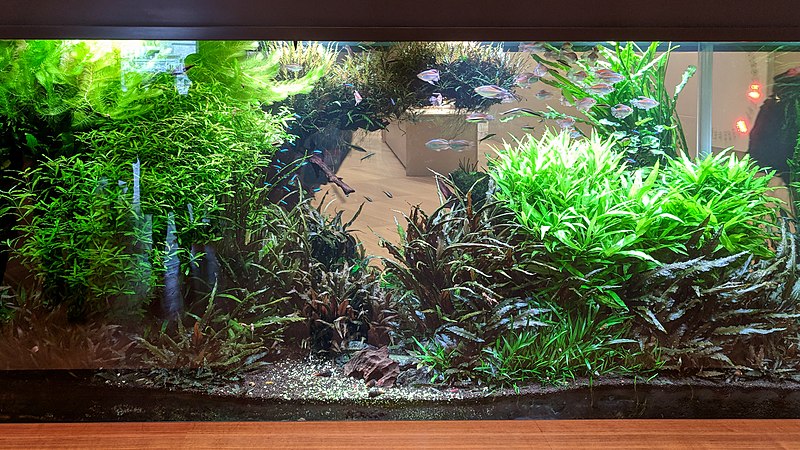 Accessibility
Accessibility
Select a location that provides easy access for maintenance tasks such as water changes, filter cleaning, and feeding. The ability to reach all sides of the tank comfortably will make your routine maintenance more convenient.
Sunlight exposure
Avoid placing the tank in direct sunlight or areas receiving excessive natural light. Sunlight can lead to excessive algae growth, temperature fluctuations, and water quality issues. Additionally, prolonged exposure to sunlight can be stressful for fish and may cause overheating in the tank.
Temperature control
Keep the tank away from drafty areas, heating or cooling vents, or direct exposure to air conditioning or heating sources. Sudden temperature fluctuations can be harmful to fish. It’s important to maintain a stable and appropriate temperature for the well-being of your aquatic pets.
Electrical outlets
Ensure that the chosen location has easy access to electrical outlets for powering equipment such as heaters, filters, and lights. Make sure the outlets are properly grounded and have protection to prevent electrical accidents due to damp conditions.
Noise and vibrations
Avoid placing the tank near sources of excessive noise, such as loud appliances or speakers. Vibrations from nearby equipment can stress fish and disturb their natural behavior. A quiet and peaceful environment is more conducive to the health and well-being of your fish.
Visibility
Consider the visibility of the tank from different angles and areas of your living space. Choose a location where you and others can easily enjoy and appreciate the beauty of the aquarium. A well-placed tank can serve as a focal point and enhance the room’s ambiance.
By carefully considering these issues, you can select an ideal location for your fish tank that promotes the well-being of your fish, makes maintenance tasks easier, and allows you to enjoy the beauty and serenity of your aquatic oasis.
Essential Equipment
Different types of tanks: glass or acrylic.
In choosing tank material, the two popular options are glass and acrylic. Glass tanks are more common and provide excellent clarity, durability, and scratch resistance. While acrylic tanks are lighter, more impact-resistant, and offer greater design flexibility with curved shapes.
Choose an appropriately sized tank based on gallons per inch
When selecting the right tank size, consider the needs of your fish. A general rule of thumb is to provide one gallon of water per inch of fully-grown peaceful fish. This concept, known as “gallons per inch,” ensures the fish have enough space to swim and thrive. Keep in mind a 30-gallon tank doesn’t hold 30 gallons of water when you consider the substrate, decorations, and inside dimensions of the tank.
Also, remember fish grow over time, so it’s crucial to consider their adult size when choosing a tank. A larger tank provides more room for swimming and offers a more stable environment with easier maintenance.
The best fish tank size for a beginning fish owner typically depends on the type and number of fish they plan to keep. For a beginner aquarium, the recommended size would be no smaller than 20 gallons. Glass aquariums are suggested over acrylic. A 29-30 gallon aquarium or larger mid-sized tank is a good size for the first-time hobbyist. Midsized tanks provide a more stable environment and allow for a wider range of fish species to be kept comfortable. The greater water volume in larger tanks helps dilute waste, maintains stable water parameters, and provides a buffer against rapid temperature fluctuations or water quality issues.
 The filtration system for maintaining water quality
The filtration system for maintaining water quality
When it comes to choosing a filter for a beginner, a hang-on-back (HOB) filter is often a popular and reliable choice. HOB filters are easy to install and maintain, provide effective mechanical and biological filtration, and are suitable for a range of tank sizes. They typically come with filter cartridges containing mechanical and chemical filtration media, making it convenient for beginners. Another option is a sponge filter, which is simple and inexpensive but mainly provides biological filtration. Sponge filters are ideal for smaller tanks or use as supplemental filtration in larger tanks.
Substrate
For substrate, a beginner can choose from a variety of options based on their preference and the needs of their fish. Gravel is a common and versatile choice, as it comes in different sizes and colors. It’s important to choose aquarium-specific gravel to avoid any harmful substances. Another option is aquarium sand, which is popular for tanks with bottom-dwelling fish species. Sand provides a natural look and is easy to clean. Whichever substrate you choose, thoroughly rinse it before adding it to the tank to remove any dust or debris.
Decorations
When it comes to decorations, it’s best to choose non-toxic materials designed for fish tanks that won’t affect water chemistry or harm fish. Silk or plastic plants can be used if they are specifically made for aquarium use. Decorations should be arranged in a way that creates hiding spots and territories for fish, providing a sense of security and natural habitat.
Do not use coins, shells, corals, wood, ceramics, rocks, or glass. It’s best to only use items specifically designed for use in fish tanks. Inspect even approved items for any sharp edges.
Keep in mind decorations take up space and limit the number of fish your tank will hold. A big sunken ship might look great, but it might not be the best use of tank space. Focus on decorations that provide the most places for fish to hide.
Live plants not only enhance the aesthetic appeal of the tank but also provide oxygen and help maintain water quality. But they come with maintenance of their own and lighting requirements. We suggest beginners use artificial plants until they have more experience with aquatic environments.
A heater and thermometer to regulate the temperature
Temperature regulation is crucial for the well-being of your fish. Different fish species have specific temperature requirements, and maintaining a stable temperature is essential for their health. To achieve this, invest in a reliable heater and a thermometer.
The heater ensures that the water remains within the ideal temperature range for your fish. The thermometer allows you to monitor the water temperature accurately, making adjustments as needed. Remember fluctuations in temperature can stress and even harm your fish, so maintaining a stable environment is key.
The role of lighting and its impact on fish and plants
Lighting serves more than just an aesthetic purpose in your fish tank. It plays a vital role in the health and well-being of fish and live plants. Adequate lighting promotes proper fish behavior, enhances their colors, and helps regulate their biological functions.
Live plants require special lighting. Proper lighting is essential for photosynthesis, allowing them to grow and thrive. Different plants have varying light requirements, so research the specific needs of the plants you plan to include in your tank. Live plants are not suggested for beginners.
Test Kits
Regular water testing is crucial for maintaining optimal water quality. For a beginner, a liquid water test kit is recommended over test strips, as it provides more accurate and reliable results. A comprehensive test kit should include tests for ammonia, nitrite, nitrate, pH, and possibly other parameters depending on the specific needs of the fish species. Regular monitoring of water parameters allows for timely adjustments and prevents potential health issues for the fish.
Remember, it’s important to research the specific requirements of the fish species you plan to keep and adapt your choices accordingly. Starting with a moderately sized tank, reliable filtration, appropriate substrate, and suitable decorations will provide a solid foundation for a successful and enjoyable fishkeeping journey.
By ensuring you have the essential equipment, such as an appropriately sized tank, filtration system, heater, thermometer, proper lighting, and testing, you’re setting the stage for a healthy and vibrant aquatic habitat.
In the next section, we’ll delve deeper into setting up your tank, including adding substrate, decorations, and providing hiding spots for your fish. Stay tuned as we guide you through the exciting steps of creating a thriving underwater paradise!
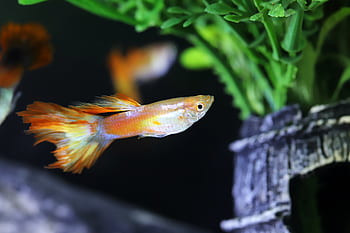 The significance of creating hiding spots and territories
The significance of creating hiding spots and territories
Fish require spaces they can call their own. Adding decorations with hiding spots and territories gives your fish a sense of security and promotes their well-being.
Hiding spots allow shy or territorial fish to retreat and feel safe. This reduces stress levels and encourages natural behaviors. Territories, marked by decorations or arrangements, help establish dominance hierarchies among certain species and prevent aggressive behavior.
Remember to consider the specific needs of your fish when choosing and arranging decorations. Research their natural habitats and behaviors to create an environment that closely mimics their requirements.
Selecting the substrate and incorporating suitable decorations adds life, character, and functionality to your fish tank. Not only do these elements enhance the visual appeal, but they also contribute to the overall well-being and happiness of your fish.
In the next section, we’ll guide you through how to determine water quality and how to properly maintain a tank and equipment. Get ready to embark on an exciting journey with your finned companions and witness the beauty of your fish tank come to life!
Water Quality and Maintenance
The nitrogen cycle and its significance for fish tank health
Understanding the nitrogen cycle is essential for maintaining a healthy and balanced ecosystem in your fish tank. The nitrogen cycle is a natural process that converts toxic ammonia, produced by fish waste and decaying matter, into less harmful substances.
During the nitrogen cycle, beneficial nitrifying bacteria convert ammonia into nitrite and then into nitrate. Nitrate, in low levels, is relatively harmless to fish. This cycle is crucial because high ammonia and nitrite levels can be harmful or even fatal to your fish.
Preparing your new fish tank before adding any fish
Preparing a fish tank before adding any fish is a crucial step in ensuring a healthy and thriving aquatic environment. By following a systematic procedure, you can create an ideal habitat for your future finned friends.
Let’s walk through the necessary steps:
- Thoroughly clean the tank, substrate, and decorations and add them to the tank.
- Install the filtration system
- Add the heater set for 83°F–87°F and thermometer (this is too hot for most fish)
- Add bubblers and any other items to be installed in the tank
- Assure all the components are functioning properly
- Fill the tank with dechlorinated water at the appropriate temperature. Use a water conditioner to remove chlorine, chloramines, and heavy metals that are harmful to fish. Slowly add the water to avoid disturbing the substrate and decorations. Fill the tank to an appropriate level.
Before adding fish, you must do a fishless cycle to create an optimal environment in your fish tank before introducing any fish. The fishless cycle uses the nitrogen cycle mentioned in the previous paragraph. This takes time, typically 2-6 weeks, and is crucial for fish health. You start the cycling process by adding a source of ammonia, such as fish food or a commercial ammonia product. Regularly test the water parameters (ammonia, nitrite, nitrate) to monitor the progress of the cycle. Keep a written record of your test results.
Patience is key during this preparation phase, as it allows the tank to establish the necessary biological processes for the well-being of your future fish. Once the tank has fully cycled and water parameters are stable, you can confidently add your desired fish species and embark on an exciting fishkeeping journey.
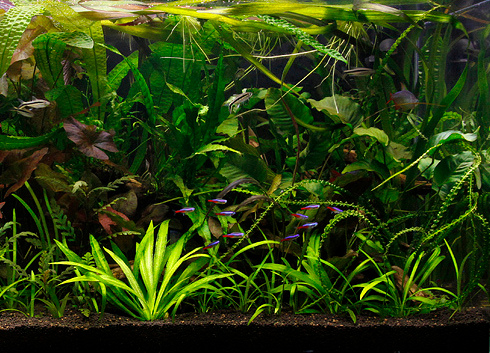 The importance of regular water testing and how to maintain proper levels
The importance of regular water testing and how to maintain proper levels
Regular water testing is vital to monitor the levels of ammonia, nitrite, nitrate, pH, and other parameters in your tank. Testing kits are readily available at pet stores and provide accurate readings.
Maintaining proper levels is essential for the health and well-being of your fish. Ammonia and nitrite should be kept at zero, while nitrate should be within acceptable levels. pH levels should be stable within the appropriate range for your fish species.
To maintain water quality, perform regular water tests and make any needed adjustments. This may include water changes, adding conditioners to remove chlorine, or using buffers to stabilize pH levels.
The necessary maintenance tasks, such as water changes and filter cleaning
Regular maintenance is essential to keep your fish tank clean and healthy. It involves various tasks that contribute to the overall well-being of your fish and the stability of the tank’s ecosystem.
Water changes are a crucial part of maintenance. They help remove accumulated waste and excess nutrients and keep water quality in check. Aim for a weekly water change of 10-20% to maintain optimal conditions.
Cleaning the filter is another necessary task. Filters trap debris and waste but can become clogged over time, reducing effectiveness. Follow the manufacturer’s instructions on how often to clean the filter media to ensure efficient filtration.
The importance of regular observation to catch any potential issues
Regular observation is key to finding potential issues before they escalate into major problems. Take some time every day to observe your fish’s behavior, appetite, and overall appearance. Look for signs of stress, disease, or aggression among the fish.
Monitor the water temperature to ensure the heater is working correctly. Observe the clarity of the water and the condition of the plants and decorations.
By being attentive and observant, you can identify and address any problems promptly. This proactive approach can prevent fish health issues, maintain water quality, and ensure the overall well-being of your aquatic companions.
In the next section, we’ll guide you through the essential steps of choosing the right fish and determining the requirements for your aquatic community. Get ready to witness the beauty of your fish tank as we continue our journey into the world of fishkeeping!
Choosing the Right Fish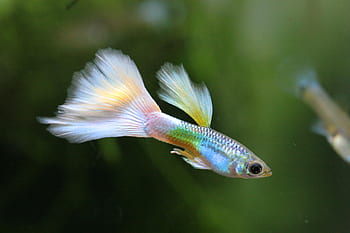
Popular beginner-friendly fish species
Now comes the exciting part of selecting the fish that bring life and vibrancy to your tank. As a beginner, focus on fish species that are well-suited for your experience and offer a higher chance of success.
Popular beginner-friendly fish species include guppies, platies, mollies, and swordtails. These species are hardy, adaptable, and relatively easy to care for. They come in many colors and patterns, adding a delightful splash of beauty to your tank.
Considerations when selecting fish, including tank size, compatibility, and behavior
The one gallon for each adult fish inch was previously considered in the section about tank selection. As a reminder, a 30-gallon tank will not hold 30 gallons of water because of the space taken by substrate, decorations, etc. The one-inch dimension is based on adult size and most pet shop fish are young. More aggressive or territorial fish may need two or more times the space of calmer species. So, a 30-gallon tank might hold 6-12 fish depending on their adult size and temperament.
When choosing fish for your tank, consider their compatibility with your other fish choices. Some fish species are peaceful and can coexist harmoniously, while others may be aggressive or territorial, requiring specific tank setups or compatible tank mates.
Think about the size, behavior, and temperament of the fish you plan to keep. Avoid combining species that have the potential to clash or stress each other out. Research the specific compatibility requirements of each fish to ensure a peaceful and thriving community.
The importance of researching specific fish requirements
Each fish species has its requirements regarding water temperature, pH levels, diet, and tank size. It’s crucial to thoroughly research the specific needs of the fish you’re interested in before bringing them home.
Consider factors such as the preferred water conditions, dietary preferences, and swimming habits of the fish. By understanding their unique requirements, you can create an environment that closely mimics their natural habitat, ensuring their health and well-being.
Start with hardy species that are tolerant of beginner mistakes
As a beginner fishkeeper, it’s only natural to make some mistakes. It’s advisable to start with hardy fish species that can tolerate fluctuations in water conditions or minor lapses in care.
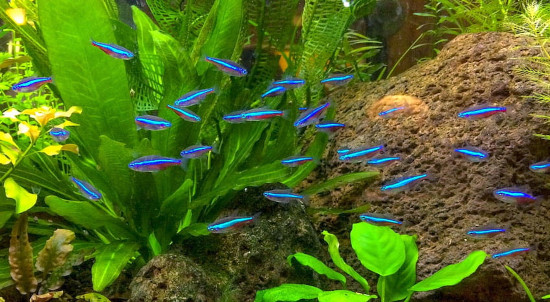 Here are some online sources for fish profiles and answers to questions:
Here are some online sources for fish profiles and answers to questions:
Here are five example combinations for stocking your first fish tank.
Choose one of the following groupings for a 30-gallon tank:
- 3 killifish + 2 bristlenose plecos + 5 cherry barbs
- 10 neon tetras + 7 guppies
- 6 kuhli loaches + 5 cherry barbs
- 4 Mollys + 8 neon tetras
- 3 bristlenose plecos + 4 mollies
- 4 cory catfish + 3 killifish + 6 neon tetras.
Source: www.hepper.com
If you like to watch schooling fish, choose one of the groups containing neon tetras. You could also fill the tank with up to 20 neons for a strikingly colorful school of fast-swimming fish.
Some additional examples of fish species suitable for beginners include guppie, platy, and swordtail. These fish grow to about 2 inches (requiring 2 gallons of aquarium space each) are resilient and forgiving, allowing you to learn and grow as a fishkeeper without jeopardizing their health. Goldfish are not recommended for beginners. They can grow quite large, generate lots of waste, and will eat any fish that fits in their mouth.
Remember, even harder fish species require proper care and attention. Regular water testing, consistent feeding, and maintenance routines are essential to ensure the long-term health and happiness of your fish.
By choosing beginner-friendly fish species and conducting thorough research, you can create a harmonious and thriving fish community in your tank. As you gain more experience and confidence, you can explore and diversify your selection of fish.
In the next sections, we’ll delve deeper into the world of fish nutrition, including types of food and feeding techniques. Stay tuned as we continue this fishkeeping journey together!
Feeding and Nutrition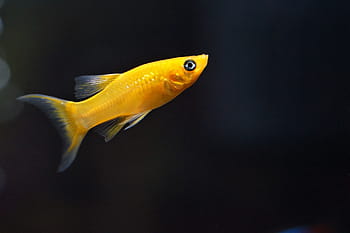
The different types of fish food
Feeding your fish a nutritious and well-balanced diet is crucial for their health and vitality. Various types of fish food are available, each catering to the specific dietary needs of different fish species.
Dry fish food, like flakes and pellets, are popular for convenience and long shelf life. These foods come in many formulations, including ones tailored for specific fish species or dietary requirements.
Frozen and freeze-dried foods offer a more natural and protein-rich option. These include brine shrimp, bloodworms, and daphnia. These foods provide essential nutrients and can be a tasty treat for your fish.
Live foods, such as small insects or aquatic organisms, can also be fed to certain fish species. These foods simulate their natural diet and can promote natural foraging behaviors.
Proper feeding techniques and portion control
Proper feeding techniques and portion control are necessary to ensure your fish receive the right amount of food without overfeeding. Overfeeding can lead to water quality issues and health problems for your fish.
Feed your fish small amounts of food they can consume within a few minutes. It’s better to underfeed slightly than to overfeed. Monitor your fish during feeding to ensure they consume all the food before it sinks to the bottom or gets wasted.
Avoid feeding your fish more than two or three times daily, as excessive feeding can lead to obesity and poor water quality. Adjust the amount of food based on the size and dietary requirements of your fish.
The importance of a balanced diet for fish health
Like humans, fish require a balanced diet to maintain health and well-being. A balanced diet includes a combination of protein, carbohydrates, fats, vitamins, and minerals.
Protein is crucial for growth and muscle development. Look for fish food with a high-quality protein source, such as fish meal or shrimp meal. Carbohydrates provide energy, while fats supply essential fatty acids for healthy immune function.
Vitamins and minerals are essential for overall fish health and disease prevention. Many fish foods are fortified with these nutrients, but it’s still necessary to provide a varied diet to ensure your fish receive a wide range of nutrients.
Consider occasional treats, like frozen or live foods, to provide additional variety and nutrients. This can mimic their natural diet and keep your fish stimulated and happy.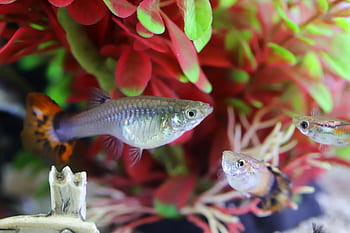
Unfortunately, it’s easy to overfeed and it’s difficult to remove the uneaten food from the tank to prevent water contamination. Uneaten food can break down and contribute to ammonia and nitrate levels, affecting water quality. If overfeeding happens regularly, there are gravel vacuums for this purpose.
Providing your fish with a balanced and nutritious diet is vital for their health and well-being. When you understand the different types of fish food available, feeding techniques, and the importance of a balanced diet, you can ensure your fish thrive in their aquatic home.
In the upcoming section, we’ll explore troubleshooting issues and the use of online forums and other sources for answers to advanced questions. Keep reading as we continue this fishkeeping adventure together!
Troubleshooting Common Issues
As a beginner fishkeeper, it’s natural to encounter a few bumps, along the road, to maintaining a healthy and thriving fish tank. Don’t worry; we’ve got your back! In this section, we’ll identify some common beginner problems and provide troubleshooting tips to overcome them.
Identify common problems faced by beginners, such as cloudy water or algae growth
Cloudy Water
To address cloudy water, start by evaluating your feeding habits. Ensure you’re not overfeeding your fish and remove any excess food promptly. Perform regular water changes to improve water quality and consider upgrading or maintaining your filtration system. Use water conditioners and beneficial bacteria supplements to support a healthy balance.
Algae Growth
Combat algae growth by controlling the amount of light your tank receives. Ensure your tank is not exposed to excessive direct sunlight or prolonged artificial light. Implement a regular cleaning routine, including scrubbing the glass, removing any excess debris, and trimming live plants to minimize nutrient buildup. Consider adding algae-eating fish, such as plecos or snails, to help keep algae under control.
Additional resources for in-depth problem-solving
While this guide provides a solid foundation for troubleshooting common issues, there may be some situations requiring further investigation and specialized solutions. Fortunately, resources are available to help you delve deeper into the world of fish tank troubleshooting.
Online Forums and Communities: Join online fishkeeping communities where you can seek advice, share experiences, and learn from experienced  fishkeepers who have faced similar challenges. These websites are great places to connect with fellow enthusiasts:
fishkeepers who have faced similar challenges. These websites are great places to connect with fellow enthusiasts:
Local Fish Stores
Visit your local fish store and consult with knowledgeable staff who can provide personalized guidance based on your specific circumstances. They can recommend products, offer expert advice, and assist you in finding solutions tailored to your tank’s needs.
Books and Guides
Consider investing in beginner-friendly fishkeeping books, guides, and apps that cover a wide range of topics, including troubleshooting common issues. These resources can provide in-depth knowledge and are a handy reference throughout your fishkeeping journey.
Remember, perseverance and a willingness to learn are key when troubleshooting issues in your fish tank. With time and experience, you’ll become more adept at identifying and resolving challenges that may arise.
Next, we’ll highlight the joy of watching your fish thrive. We will also discuss the possible creation of a self-sustaining environment through fish breeding.
Congratulations, beginner fishkeeper! By this point, you’ve acquired a wealth of knowledge on starting and maintaining a fish tank. Now, let’s delve into the delightful aspects of fishkeeping that make it such a rewarding and interesting hobby.
The joy of watching your fish thrive and grow
One of the greatest joys of fishkeeping is watching the vibrant personalities of your fish as they thrive and grow in their aquatic home. You’ll be amazed by the variety of behaviors, from the graceful glide of a betta to the playful antics of a school of tetras.
Take a moment each day to observe your fish, their unique colorations, and their interactions with each other. It’s a tranquil and mesmerizing experience that can bring peace and relaxation to your day.
The possibilities of breeding fish and creating a self-sustaining ecosystem
As you gain experience and confidence in fishkeeping, you may want to explore the fascinating world of breeding fish. Breeding fish can be a rewarding and educational endeavor, allowing you to witness the miracle of life as tiny fry hatch and develop into fully grown fish.
Creating a self-sustaining ecosystem within your fish tank is another exciting possibility. With careful planning and research, you can introduce compatible fish, live plants, and invertebrates that create a harmonious balance. This dynamic ecosystem can be a source of continuous wonder and fascination.
Remember, fishkeeping is a dynamic and ever-evolving pursuit. Embrace the joy of watching your fish thrive, consider the possibilities of breeding and creating a self-sustaining ecosystem, and remain curious and open-minded as you journey through the vast and fascinating world of fishkeeping.
Conclusion
This is it fishkeeper! You’ve reached the final section of our comprehensive guide on starting a fish tank for beginners. Let’s take a moment to recap the key points we’ve discussed and reaffirm the accessibility and rewards of embarking on this interesting hobby.
Key points to remember
Throughout this article, we’ve covered many topics, starting from the enchanting world of fishkeeping and its calming and therapeutic effects. First was the planning stage, where we pointed out the importance of evaluating space, setting a budget, and considering the types of fish you’ll want to keep. Then we explored essential equipment such as tank size, filtration systems, heating, and lighting. And we also discussed the significance of substrates, decorations, and creating hiding spots for your fish’s well-being.
Moving on, we explored the process of choosing the right fish, emphasizing beginner-friendly species, compatibility considerations, and the importance of researching specific fish requirements. We covered water quality and maintenance, including the nitrogen cycle, water testing, and regular observation to catch potential issues. We then delved into feeding and nutrition, discussing different types of fish food, feeding techniques, and the importance of a balanced diet.
Additionally, we addressed troubleshooting common issues, such as cloudy water and algae growth, providing practical tips to overcome them. Finally, we highlighted the joy of watching your fish thrive, the possibilities of breeding fish, and the importance of ongoing learning and exploring the fishkeeping community.
The accessibility and rewards of starting a fish tank for beginners
Starting a fish tank is a hobby that is accessible to everyone, regardless of age or experience. It offers a rewarding and educational experience, allowing you to witness the beauty of aquatic life in your own home. The calming effect of watching fish swim gracefully and the joy of observing their growth and interactions are truly priceless.
Not only does fishkeeping provide aesthetic enjoyment, but it also offers educational opportunities, therapeutic benefits, and the possibility of creating a self-sustaining ecosystem. It’s a hobby that can be tailored to your preferences and allows for continuous learning and growth.
Final Thoughts
As we wrap up this comprehensive guide, I want to extend a heartfelt invitation to you to embark on your fishkeeping journey. Take the knowledge you’ve gained and let it fuel your curiosity and passion for creating a vibrant and thriving fish tank.
Remember, starting a fish tank for beginners is an exciting adventure. Don’t be afraid to make mistakes; it’s all part of the learning process. Embrace the joy of watching your fish flourish, seek support from the fishkeeping community, and continue expanding your knowledge.
So, what are you waiting for? Dive into this wonderful hobby, create your aquatic oasis, and experience the joys of fishkeeping firsthand. Your aquatic companions await, ready to captivate and bring joy to your everyday life.
Here’s wishing you all the best with many fulfilling hours in your fishkeeping journey!
Resources:
INJAF, Guide to aquarium wood, downloaded 5/21/2023, https://injaf.org/articles-guides/general-guides/guide-to-aquarium-wood/
APIfishcare.com, Choosing the right aquarium size, downloaded 5/23/2023, https://apifishcare.com/post/choosing-the-right-aquarium-size
Gee NR, Reed T, Whiting A, Friedmann E, Snellgrove D, Sloman KA. Observing Live Fish Improves Perceptions of Mood, Relaxation, and Anxiety, Int J Environ Res Public Health. 2019 Aug 27;16(17):3113. doi: 10.3390/ijerph16173113. PMID: 31461881; PMCID: PMC6747257. https://www.ncbi.nlm.nih.gov/pmc/articles/PMC6747257/
DISCLAIMER:
We use affiliate links and pay-per-action advertising. When you use these links to buy something we may earn a commission. Thank you for visiting and for your support.
PetsWebPages.com may contain copyrighted material. This use may not have been specifically authorized by the copyright owner. The material contained in this website is distributed for informational and educational purposes. Small portions of the original work may have been used but those portions could not easily be used to duplicate the original work. This usage constitutes ‘fair use’ of any such copyrighted material (referenced and provided for in section 107 of the US Copyright Law).
All trademarks displayed here are the property of their owners and are neither an endorsement nor a recommendation for or from those organizations. With the exception of affiliate links, linking to the websites of third-party organizations is not intended to imply we recommend those organizations or that the organizations endorse or have any affiliation with PetsWebPages.com.





